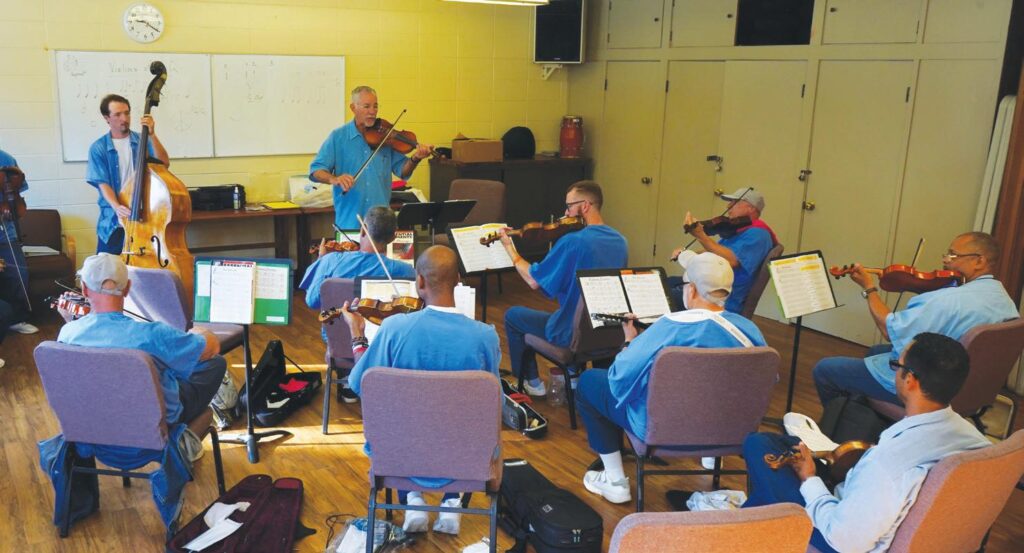
An incarcerated-led music program conducts weekly lessons teaching residents basic and technical violin skills.
The entry-level class takes place every Tuesday morning from 8:00 a.m. to 9:30 a.m. in San Quentin’s Chapel C.
The course’s participants are issued written permission notification slips, authorizing them to be loaned a violin, bow, and a carrying case.
The organization Friends of San Quentin Strings offers its outside support, raising money for the program and donating violin replacement strings, bows, and cases. Some of the participants even recently wrote letters to the program coordinators thanking them for their support.
“Without the generosity of the outside benefactors, this class wouldn’t be possible,” said resident instructor John Zeretzke.
The course consists of a series of lessons beginning with the basics: instructions on the care and maintenance of both the violin and the bow, proper tuning of the instrument, and the placement of one’s fingers on the strings to make the various notes.
While Zeretzke provides overall instruction and technical demonstrations to the entire class, he is assisted by resident Daniel Le.
Le helps to keep the class moving forward, making sure that students do not fall behind in their lessons.
As instructors teach the foundational skills of learning how to play scales and simple tunes, there remains a special emphasis on the tempo and the rhythm of music being taught.
According to Zeretzke, the speed of the tempo does not matter, as long as it is even and consistent. A quicker tempo will come with practice, but “bad habits, learned early, are hard to break.”
The class teaches a wide variety of skills. Not only do participants learn how to read sheet music and play from it, but they are also taught how to play songs by memory and ear.
Dr. G. Johnson, a member of the prison’s Mental Health department, who is also an accomplished violinist, occasionally comes to the sessions and offers the students his expertise as well.
“It is amazing to witness the growth of the members of the San Quentin violin class apart from learning the violin,” said Dr. Johnson.
Students are assigned homework each week that includes: practicing scales to familiarize themselves with the instrument and build muscle memory, music reading, bow control, and other related exercises.
For many San Quentin residents the class has become an outlet, and a space where they can feel authentic and free of judgment.
Taylor Curtys recalls how he has found a great sense of comfort in playing the violin, especially after being told that he had a learning disability.
“When I play the violin, the belief that I have a learning disability lessens with each stroke of the bow,” he said.
Travis George feels similarly. Thanks to his experience growing up in the church, he was exposed to music and a very talented violin player at a young age, which has further inspired him to pick it up and play it himself.
He added that while singing in the prison’s Catholic choir, he heard about the course from a current violin player, quickly signing up thereafter.
Another San Quentin resident, Schfuncell Whitley, recalled his own past experiences, highlighting the role music has played on his life.
“I played cello in school and fell in love with classical music, but couldn’t stick with it. I tried guitar for a while but wanted the violin for classical music,” he said.
Thanks to the program, participants are expected to learn and play simple songs by the end of each week in order to demonstrate to themselves and others that they really can make music.
Having had a rough upbringing as a gang member, Wesley Hargett’s experience with the course has been a way for him to express himself and change his life’s narrative.
“Learning how to play an instrument with such of a beautiful sound is unbelievable. For someone from my background, this opportunity is a dream come true,” he said.